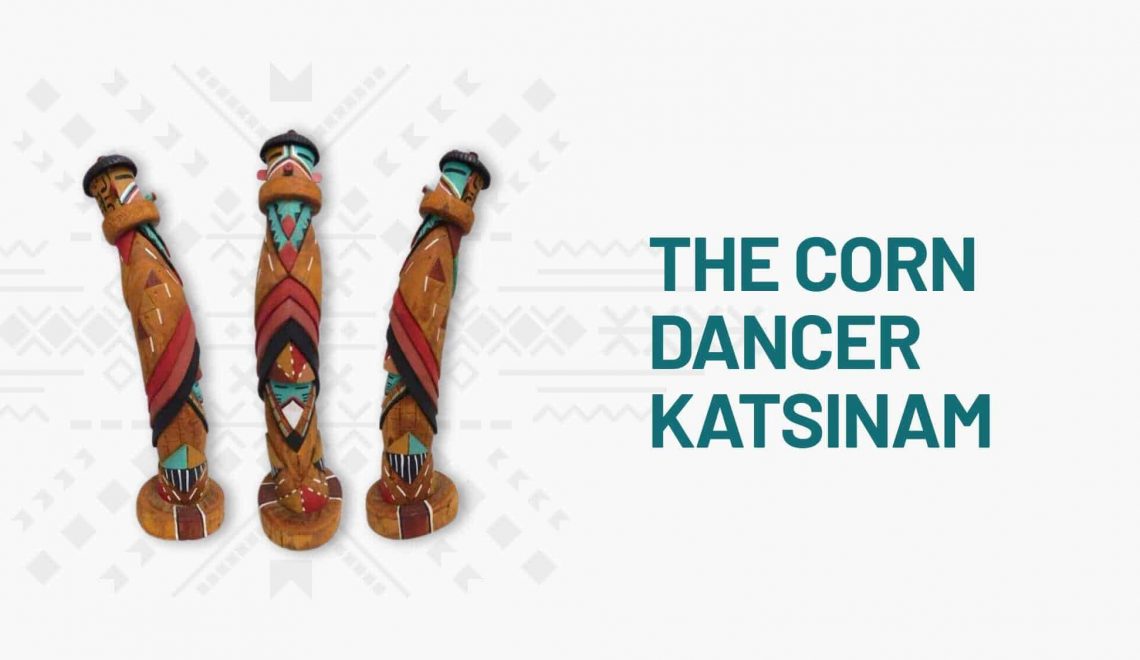
The Katsinam
The Hopi and other Puebloan Katsinam are represented in three ways. Katsinam are sacred spirits of the natural world. They are impersonated by masked male dancers called Katsinam and carved into the katsintithu dolls that carry their images. The Katsinam are a fluid, flexible multitude of hundreds of different spirits who bring blessings, fertility, and protection to the people. Each Katsina expresses an essential character. Some are complex, multidimensional, and full of personality; others are simple and supportive. Clown will imitate and exaggerate bad behavior. Bear is powerful and courageous and can heal illnesses. Eototo is the chief and father who controls the seasons and brings nature’s gifts. There are Katsinam for rain, stars, ancestors, animals, plant life, and other aspects of Hopi life. All Katsinam are living constituents of a harmonious, holistic universe.
The Origin of the Corn Dance
Dance is intrinsic to Hopi spirituality. The Corn Katsinam celebrate this staple at planting, during the growing season and finally at harvest. The Corn Katsinam are prevalent at almost every dance.
The Spring Corn Dance and the Corn Dancer Katsina
Corn is a sacred plant that is both spiritually and physically essential to Hopi life. In springtime, the Qaokatsina come to the plaza to help the corn grow into a bountiful harvest.
Corn Dancer, Ka-e, Avachhoya, and Qa-o, brings fertility to corn through his dance. His hand movements imitate cornstalks and other natural elements.
Drummers and chanters accompany the corn dancers to invoke the spirits of the clouds and rain. Corn dancers are always male, though both men and women are personated in a line as corn dancers during the plaza ceremonies.
Corn Dancer Katsinam can take many forms and may be painted in the four directional colors of red, yellow, white, and blue that also represent the four varieties of corn grown by the Hopi people. They are masked and have horizontal feathers on their crowns. Sometimes their faces are painted with ears of corn, and their bodies are painted with spots or colored rings representing corn kernels.
Katsina Dolls
Katsina dolls are given to Hopi infants to help them learn about their spirit guides as well as their own place in the community. The dolls are hung inside the home and represent the connection to the Katsina spirit. Initiated Hopi men carve the dolls from cottonwood root, which signifies resilience because the trees can survive in the dry climate. Corn Katsina dolls may be dancers or maidens, and each doll reflects the individual artist, his family, clan, village, and the history/ tradition of the specific Katsina. An authentic Katsina doll is not just a beautiful object – it manifests the human connection to the divine universe. Corn Dancer Katsina dolls symbolize the lifeblood and abundance of the Hopi people.

